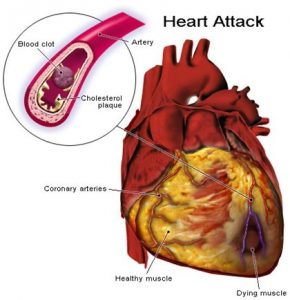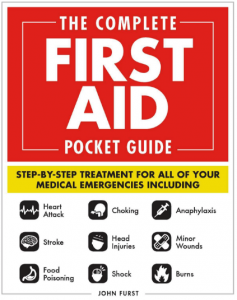How to recognise a heart attack
A h eart attack is a life-threatening medical emergency in which the heart muscle suffers an event in which part of the heart is damaged or dies. A person having a heart attack may have chest discomfort, pain, or pressure; discomfort in the upper body including the arms, back, neck, or jaw; shortness of breath; cold sweat; nausea; or lightheadedness.
eart attack is a life-threatening medical emergency in which the heart muscle suffers an event in which part of the heart is damaged or dies. A person having a heart attack may have chest discomfort, pain, or pressure; discomfort in the upper body including the arms, back, neck, or jaw; shortness of breath; cold sweat; nausea; or lightheadedness.
The pain or discomfort is usually lasting. Pain is felt throughout the upper body as it is deferred from the brain as it may be confused to where the pain signals are coming from.
Women, the elderly, and people with diabetes may have less obvious signs of heart attack. They may complain of not feeling well or become nauseous, sweaty, or short of breath without the classic chest discomfort.
If you suspect someone is having a heart attack call for emergency medical help immediately. Many people suffering from chest discomfort may be in denial that they are having a medical emergency. You must act quickly even if they fail to act for themselves. Time is again the enemy. Delays in seeking medical attention may limit medical treatments or lead to permanent injury or death.
After calling for help, the victim should rest and not move or exert themselves. If there is an AED available bring it near the victim, monitor them, and be ready to start CPR and/or use an AED if needed.
If you suspect someone is having a heart attack and they are not allergic to aspirin; you should have the victim chew two baby aspirin or one regular adult aspirin if available. Aspirin has proven to be beneficial during a heart attack. Chewing the aspirin helps get it into the bloodstream faster.




